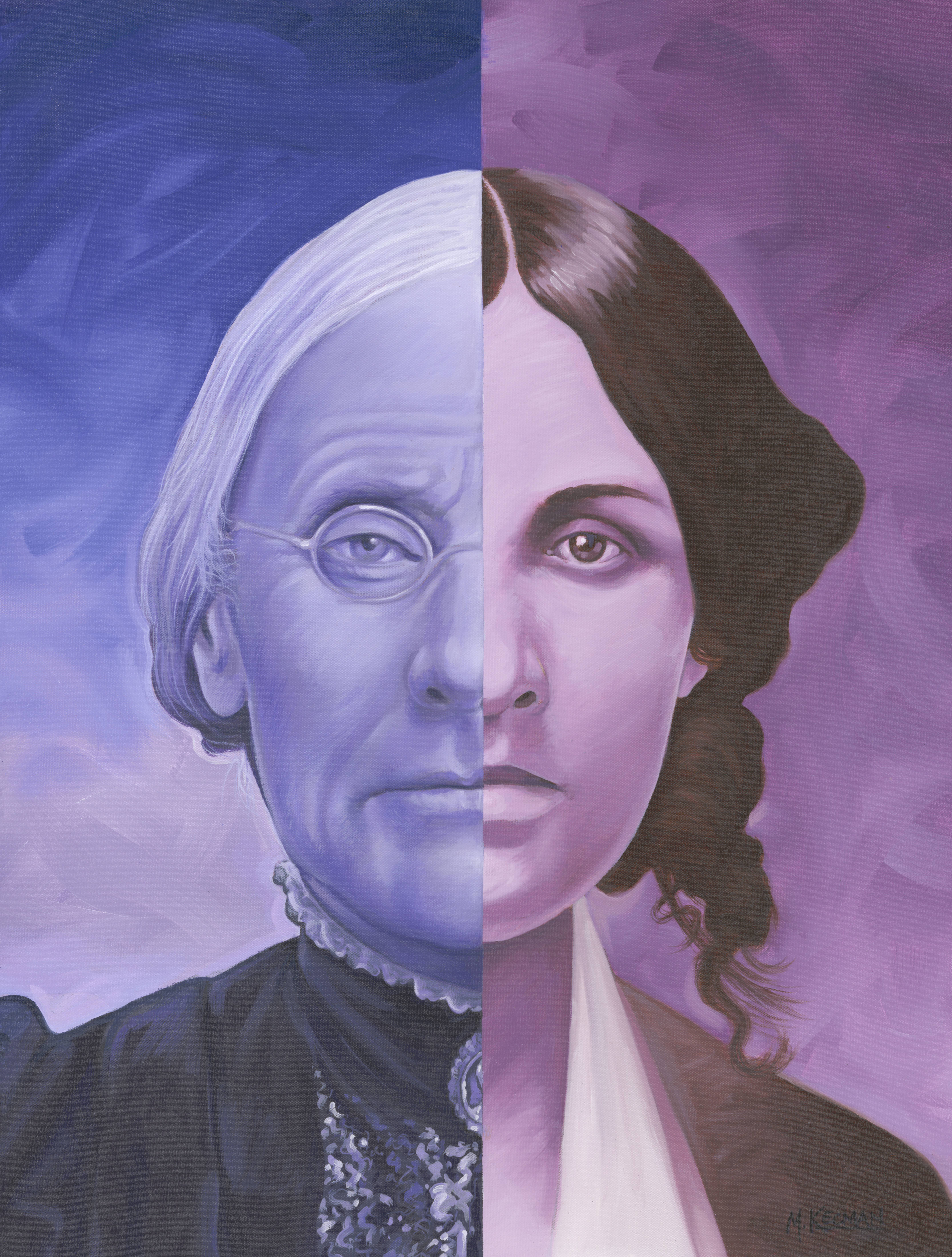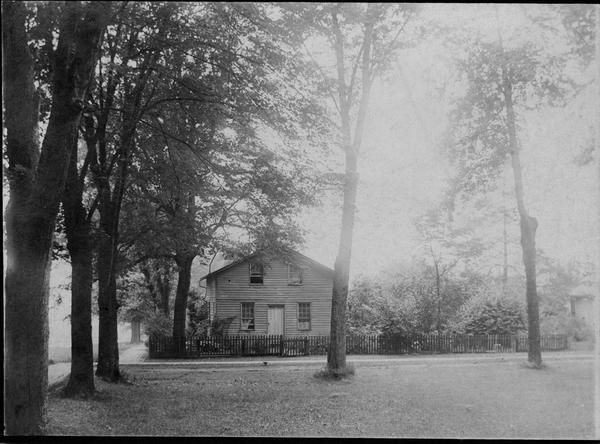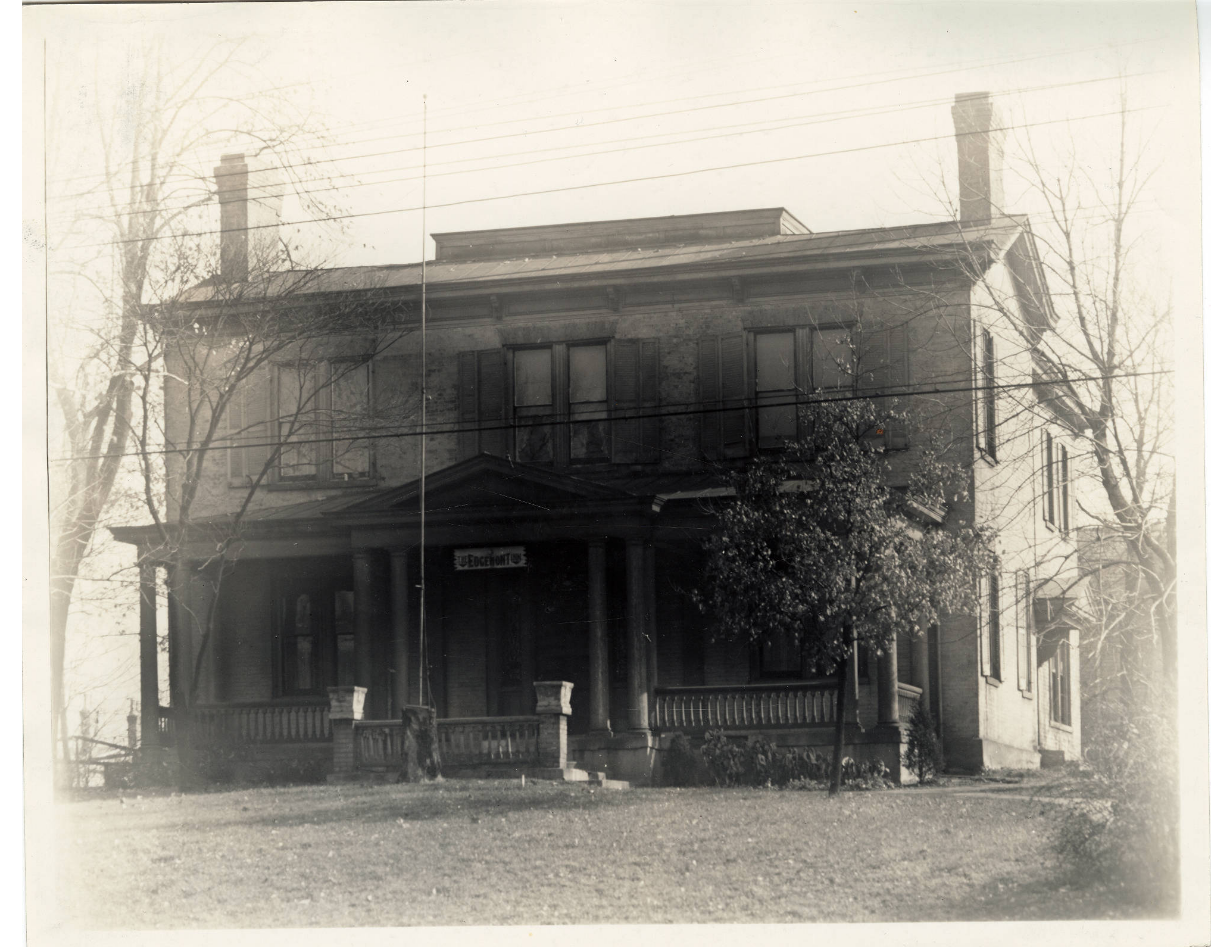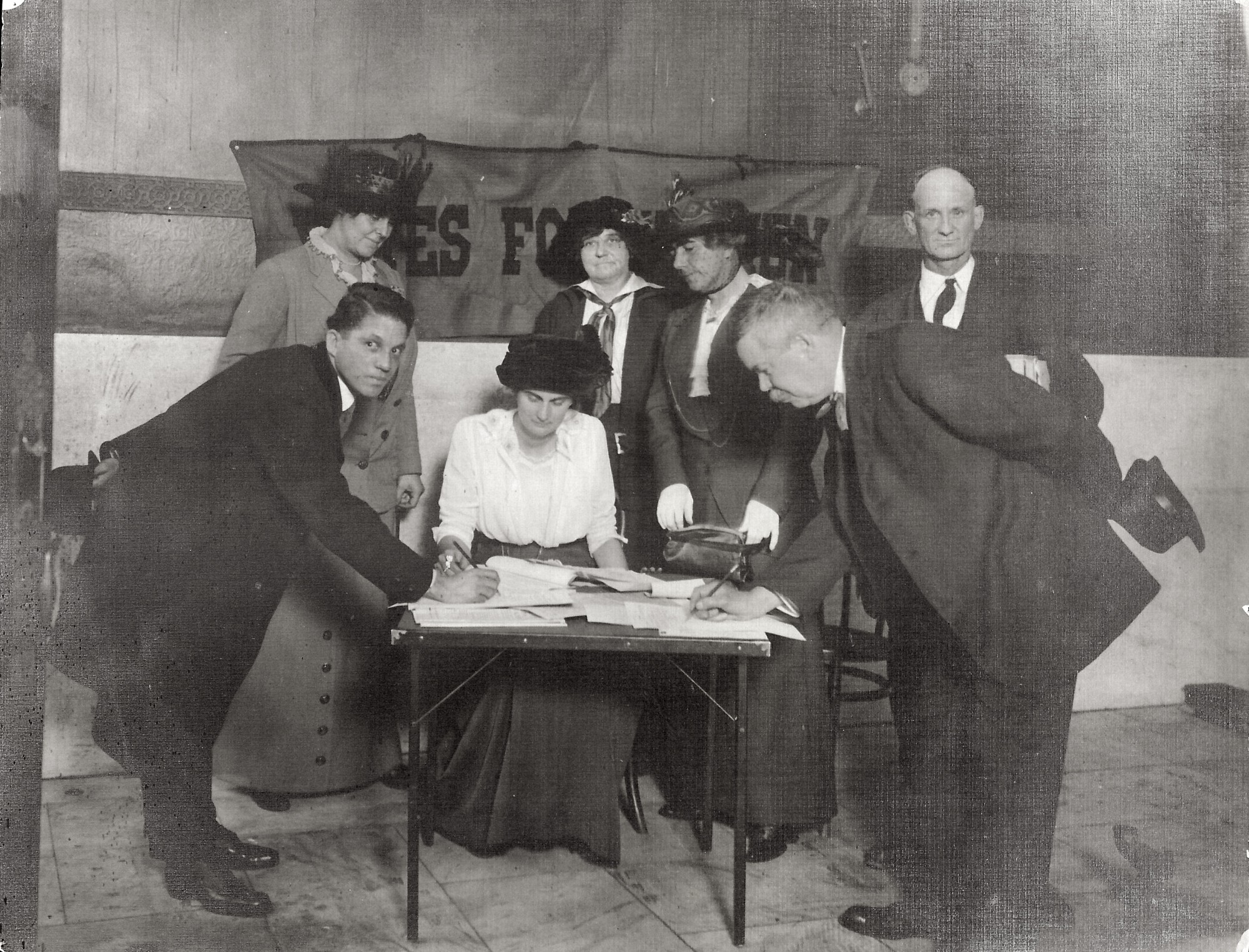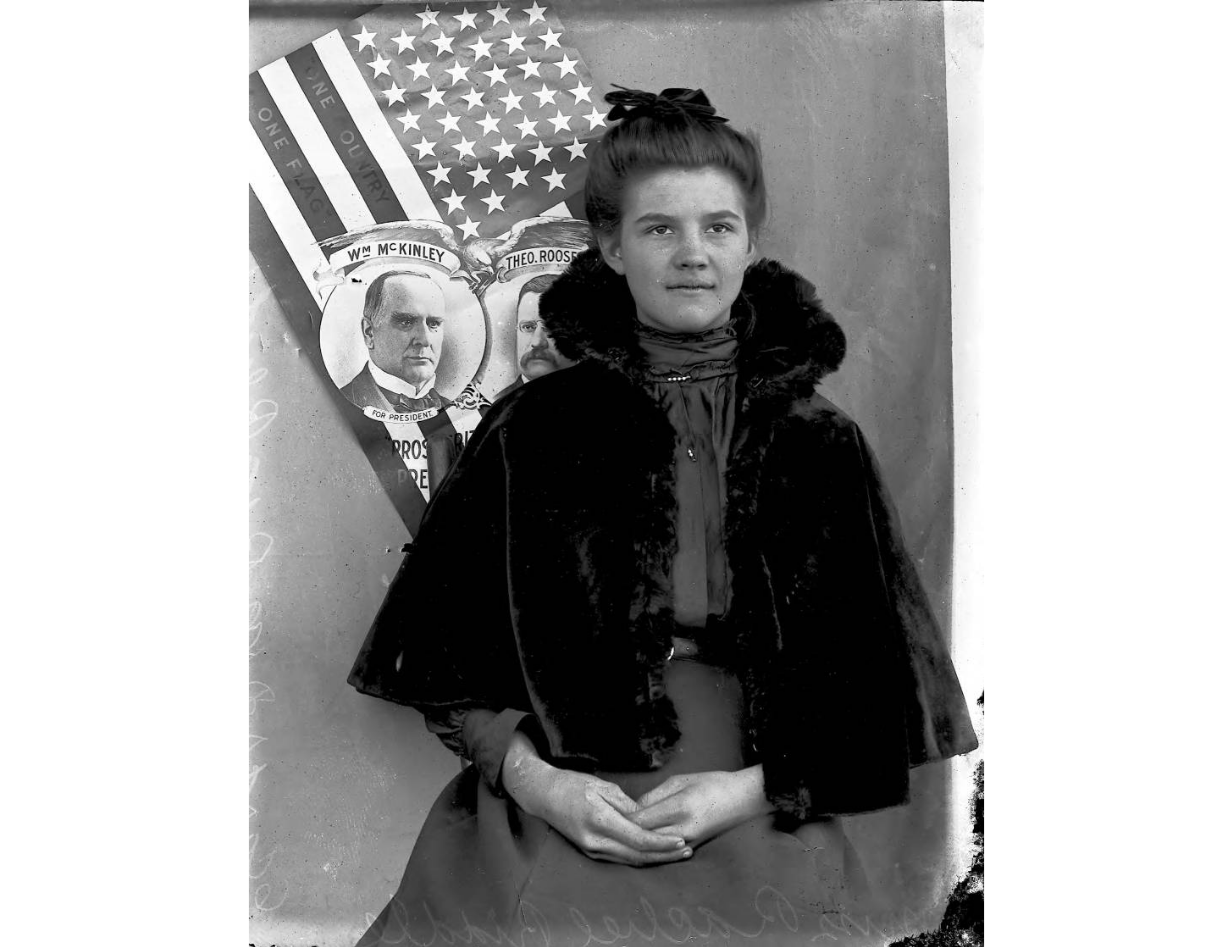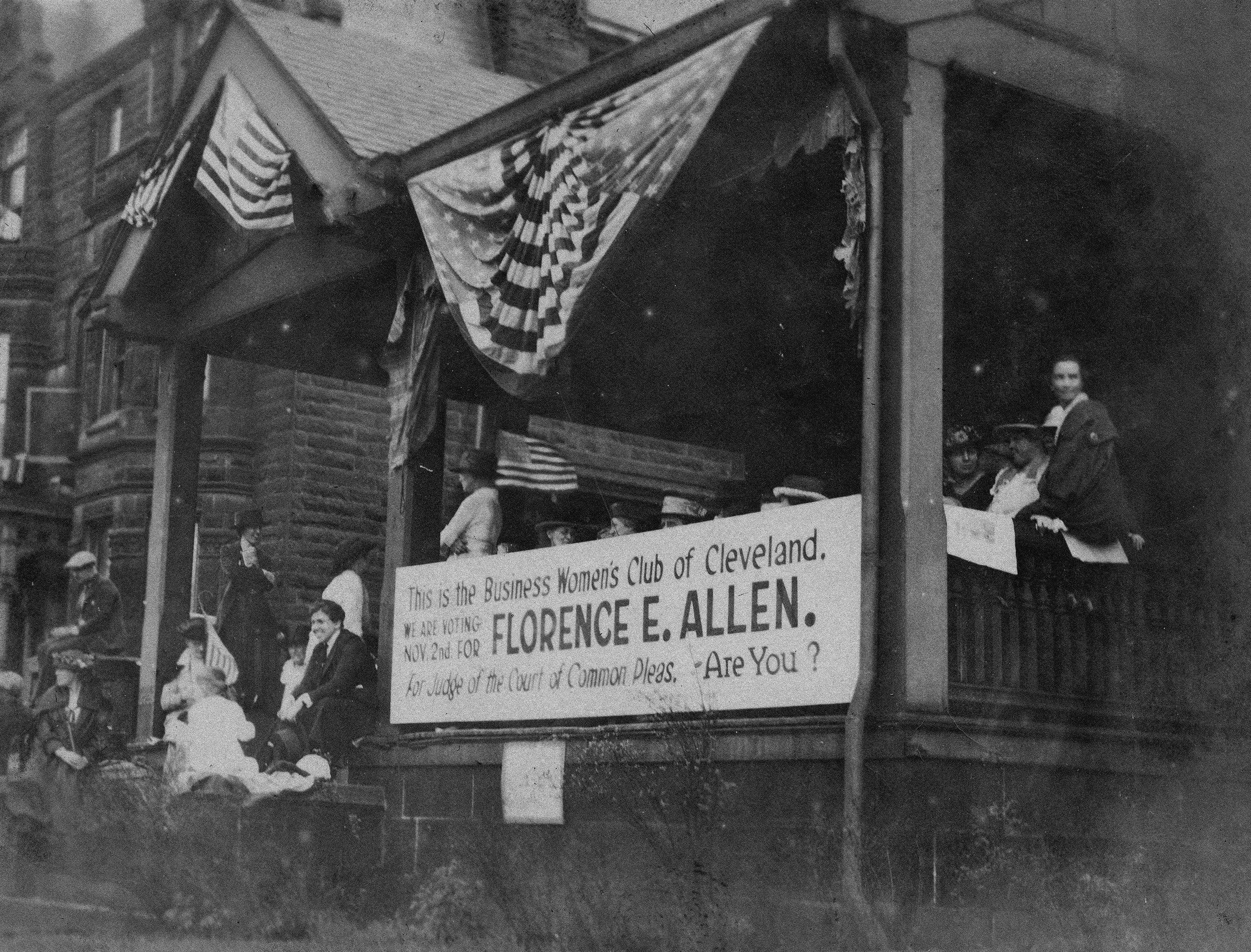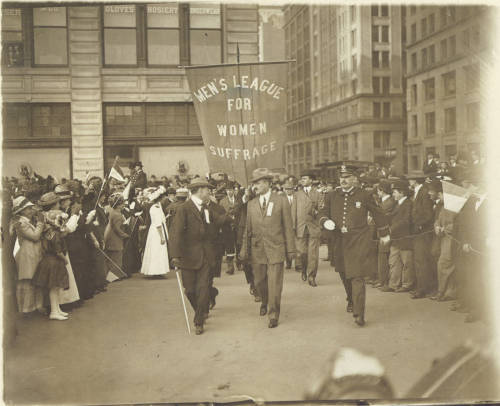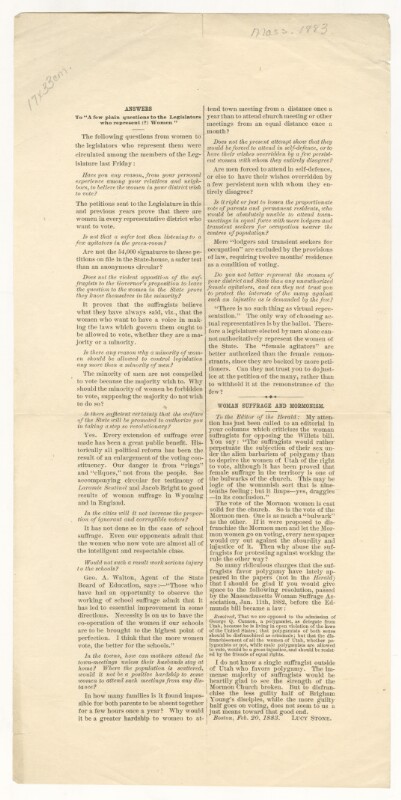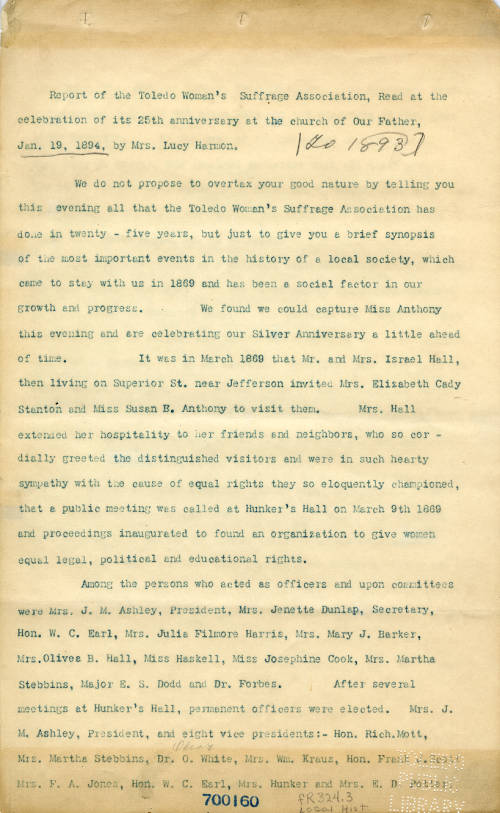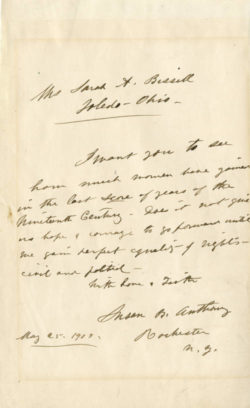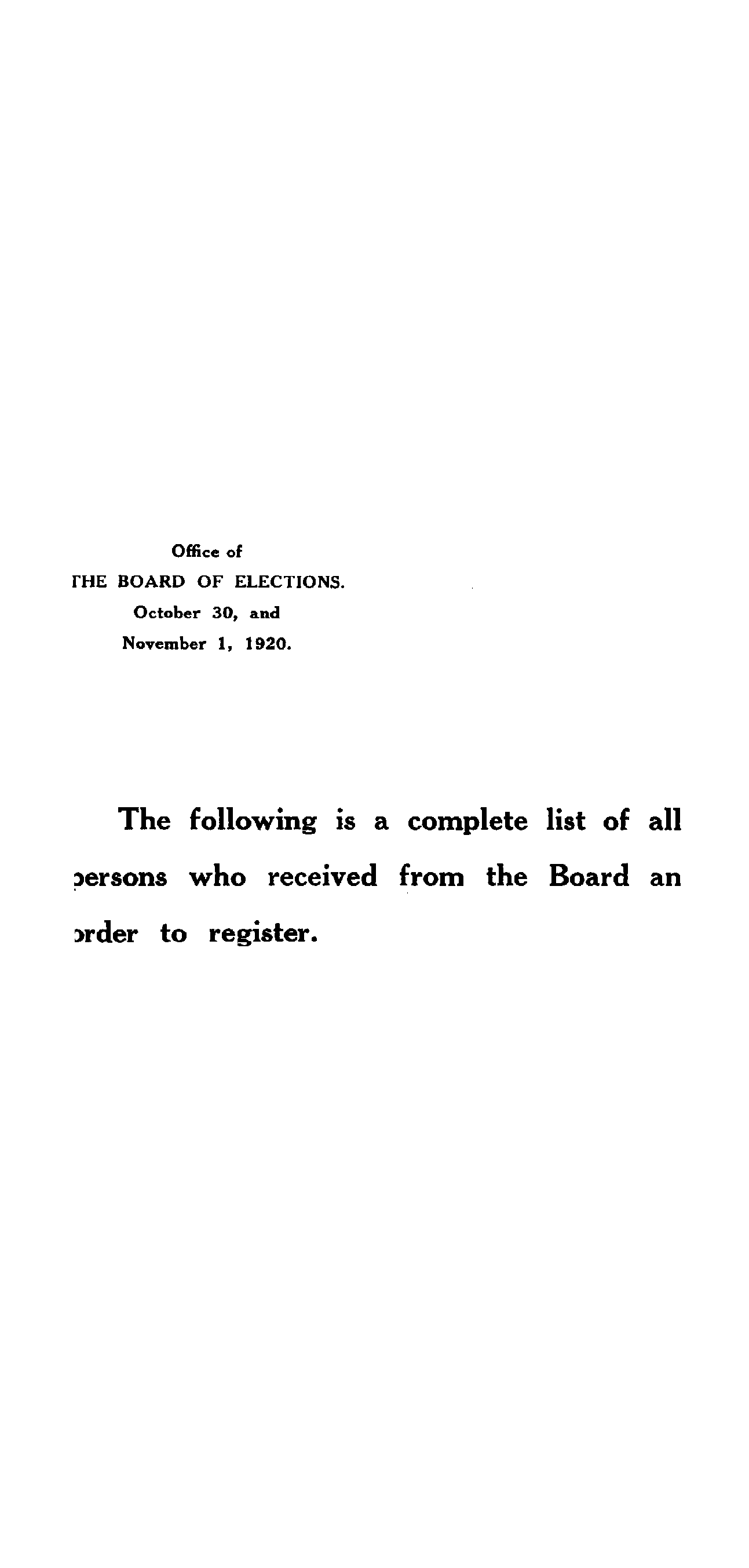Women’s Suffrage and the 100th Anniversary of the 19th Amendment
Module Overview
- Topic: Women’s Suffrage and the 100th Anniversary of the 19th Amendment
- Time Period: 1848-1920
- Keyword(s): Women’s Suffrage, Voting Rights, Progressive Era, Political Reform, Women’s Rights, Constitutional Amendments
- Grade Level(s): Grades 6-12
- Learning Standard(s):
- Grade 8 Social Studies: History Strand 14, Government Strand 20, 21
- High School American Government: Civic Participation and Skills
Elizabeth Cady Stanton – one of the Seneca Falls convention leaders – reminisced, “We were but a handful … ,” recalling the supporters of woman suffrage at the convention where the right to vote was their most radical demand. Between this first convention advocating the rights of women and the ratification of the Nineteenth Amendment guaranteeing women’s right to vote in 1920 lay a long and arduous journey. Victory was never assured until the final moments.
In the intervening years, the drive for women’s voting rights encompassed the lives of several generations of women. Suffrage supporters survived a series of dramatic transformations in their movement that included: 50 years of educating the public to establish the legitimacy of woman suffrage; approximately 20 years of direct lobbying as well as dramatic militant action to press their claim to the vote; the division of each generation into moderate and radical camps; and the creation of a distinct female political culture and imagery to promote “votes for women.”
Content courtesy of Crusade for the Vote, National Women’s History Museum
- Suffragettes and Their Homes Depicted
- Propaganda for the Movement
- Letters & Documents
- Women’s Opposition to the Suffrage Movement
After the primary source items, you will find an Additional Resources list and a Teaching Guide that includes discussion questions and classroom activities.
Women’s Suffrage Set Sections And Materials
Suffragettes and Their Homes Depicted
Women's Suffrage
1913, Florence Allen Marching for Women's Suffrage
Hannah Bishop House
Edgemont Inn - Harriet Beecher Stowe House
Men signing a petition supporting women's suffrage
Letters and Documents
Answers regarding women's suffrage
Toledo Women's Suffrage Association, Report, January 19, 1894
Susan B. Anthony letter to Mrs. Bissell, May 25, 1909
The names and residences of all the persons registered in the city of Cincinnati for the election to be held November 1920. Part 1
Contributed by the Public Library of Cincinnati and Hamilton County
Women’s Opposition to the Suffrage Movement
Woman's profession as mother and educator : with views in opposition to woman suffrage
Contributed by the Public Library of Cincinnati and Hamilton County
Women's Opposition To Suffrage
Additional Resources
- Smithsonian, National Portrait Gallery, Women’s Suffrage – A digital exhibit of portraits of suffragettes from the National Portrait Gallery. Each image has a brief biographical description discussing the achievements of the subject.
- Library of Congress Women’s Suffrage Primary Resource Set – A primary resource set developed by the Library of Congress, similar to this resource. This resource includes a teacher’s guide, analysis tools, and links to a number of different types of resources from the Library of Congress’ collections.
- National Archives, Women’s Suffrage and the 19th Amendment – A primary resource set developed by the National Archives, similar to this resource. The resource includes a number of different types of resources from the National Archives’ collections.
- Susan B. Anthony Center at the University of Rochester – This resource includes biographical information on influential suffragists, a timeline of the suffrage movement to the present, and information on the Seneca Falls Convention.
- National Park Service, Elizabeth Cady Stanton – This resource created by the National Park Service provides a biographical look at Elizabeth Cady Stanton with links to her writing and speeches.
- Alice Paul and the Equal Rights Amendment – The Alice Paul Institute in Mount Laurel, New Jersey provides a history of the passage of the Equal Rights Amendment, and biographical information on Alice Paul.
- Carrie Lane Chapman Catt Girlhood Home and Museum – The museum dedicated to the home of Carrie Lane Chapman Catt provides biographical information on this suffragette, and other historical information on the history of the women’s suffrage movement.
- Ohio History Central, Lucy Stone – This article provided by the Ohio History Connection provides biographical information on the suffragette Lucy Stone, who graduated from Oberlin College in Ohio.
- National Women’s History Museum, Ida B. Wells-Barnett – This article provided by the National Women’s History Museum provides biographical information on the suffragette Ida B. Wells-Barnett who was influential in the promoting the civil rights of both women and African Americans.
- Crusade for the Vote – The National Women’s History Museum provides a number of resources detailing the history of the suffrage movement through timelines, educational resources, and primary sources.
Teaching Guide
This guide will serve to outline some possible ways to interact with the digital content and has suggestions to have students pull information from the examples listed above.
Discussion Questions
- How are women still underrepresented in American politics today?
- How did opponents to women’s suffrage state their opposition? How was it answered?
- Where did the 1913 “Votes for Women” pilgrimage begin and end?
- Did women participate in the political process before they could vote? If so, how?
- Was the right to vote universally embraced by women?
- What judges in your county are female? What judges in Ohio are female?
Download Discussion Questions (PDF)
Classroom Activities
- Propaganda was an important tool for making a substantive case in an eye-catching fashion. Work together in groups to design new slogans for the women’s suffrage movement from a contemporary perspective. If it helps, divide up the project so some students are writing slogans, while others use their artistic skills to draw and design a banner.
- Research the political and ethical issues facing women in America today. How are women fighting for equal rights in our current time period? What are the arguments on each side of the issue you are investigating?
